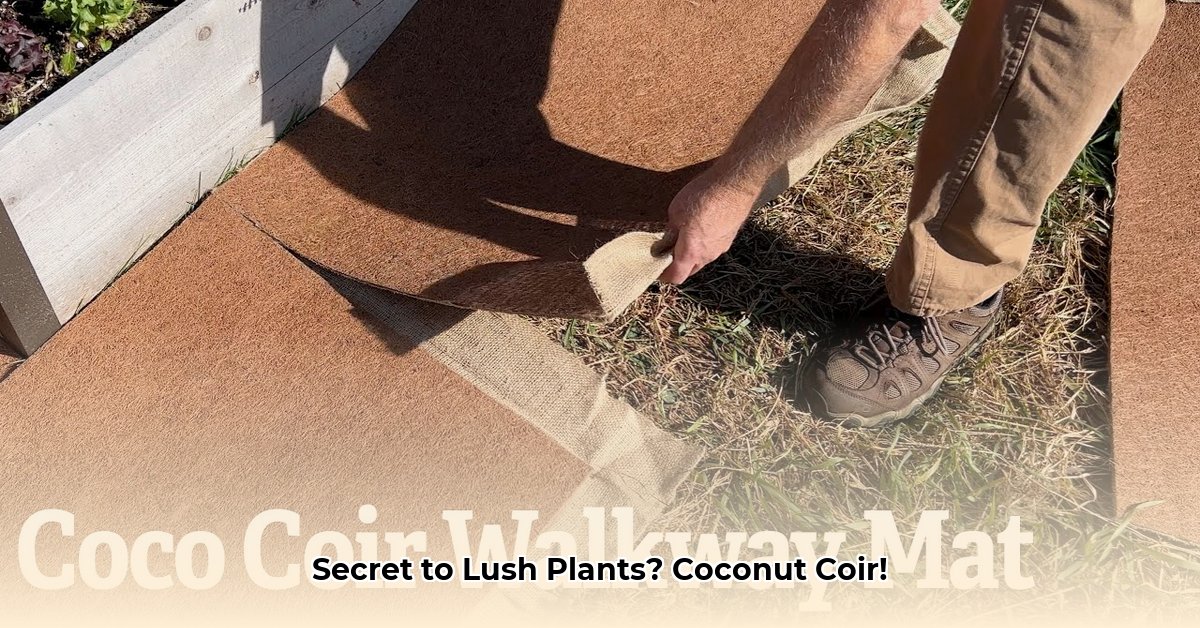
Choosing the right growing medium is crucial for a thriving garden. Coconut coir, a sustainable alternative to peat moss, is gaining popularity among gardeners. This guide compares two readily available options at Tractor Supply – Harris and Viagrow – empowering you to make an informed decision. We'll cover everything from price comparisons to preparation techniques and troubleshooting, ensuring you have the knowledge to cultivate a flourishing garden.
Coconut Coir at Tractor Supply: Harris vs. Viagrow
Tractor Supply offers several coconut coir brands, but Harris and Viagrow are frequently chosen. Let's compare them to see which best suits your needs. Note that detailed comparative data (water retention, aeration specifics) is often lacking on product packaging and requires further independent research or testing. This comparison focuses on readily available information.
Price and Volume Comparison
Determining the best value depends on accurate price-per-gallon calculations. This requires knowing the brick size and the expansion ratio (how much the brick expands when hydrated). Check Tractor Supply's website or in-store pricing for the most up-to-date information. Then, calculate the price per gallon for each brand to make a direct cost comparison. For example, if four Harris bricks cost $20 and expand to 9 gallons, the cost is approximately $0.56/gallon. Repeat this calculation for Viagrow using their brick size and expansion ratio. This helps determine which brand offers the better value for your budget.
Brick Size and Expansion Ratio
Brick size directly impacts convenience and efficiency. Larger bricks are advantageous for large-scale operations, minimizing handling and preparation time, while smaller bricks are more practical for smaller gardens or individual projects. Check the product packaging or website of Tractor Supply to find the exact dimensions of the bricks for each brand and their respective expansion ratios. A larger expansion ratio indicates a greater volume of growing medium yielded from a single brick.
Water Retention and Aeration
These are critical factors influencing plant health. Good water retention prevents drying, while proper aeration ensures healthy root growth. However, specific data for water retention and aeration capacities is often missing from product labels. Consumers may need to rely on independent reviews or perform their own trials. Consider the potential need for amending the coir with perlite or vermiculite to enhance drainage and aeration if this information is unavailable for the specific products.
Ease of Use
Hydrating and using coconut coir is generally straightforward. Both Harris and Viagrow coir bricks typically require soaking in water until fully expanded. Check the specific instructions on the packaging for optimal results. This might include the soaking time variation between brands and what to do if the coir remains partially unexpanded. Hands-on experience is valuable in truly assessing ease of use.
Your Coconut Coir Gardening Guide
This section provides a step-by-step guide to using coconut coir effectively, regardless of the chosen brand.
1. Determining the Right Amount
Carefully measure your planting area. Consider plant density (the number of plants per square foot) to accurately estimate the required amount of coir. Use the expansion ratio from the product packaging to calculate the number of bricks needed. It's wise to have a small surplus to avoid running short.
2. Preparing and Using Coconut Coir
- Soak: Submerge the coir brick(s) in water until fully expanded. Follow the manufacturer’s instructions.
- Drain: Gently squeeze out excess water to avoid waterlogging.
- Amend: Improve drainage and aeration by mixing in perlite or vermiculite. Add a balanced fertilizer to provide essential nutrients.
- Plant: Fill your containers or garden beds with the amended coir mixture, then plant your seedlings or seeds.
- Water: Water thoroughly after planting.
3. Sustainability Considerations
Coconut coir is a renewable resource, making it a more environmentally friendly alternative to peat moss. However, responsible sourcing is vital. Look for certifications indicating sustainable harvesting and processing practices. Consider the transportation distance; locally sourced coir minimizes the carbon footprint. Compare the environmental impact of coconut coir with peat moss or other growing media.
4. Troubleshooting Common Issues
- Salinization: If you notice a white crust (salt buildup), flush the coir thoroughly with water.
- Compaction: Over-watering leads to compaction. Improve drainage and aeration by amending with perlite or vermiculite and using well-draining pots.
Conclusion: Grow Smarter, Not Harder
Choosing the right coconut coir involves considering various factors: price, volume, ease of use, and sustainability. By systematically comparing options like Harris and Viagrow at Tractor Supply, and following the tips provided in this guide, you can confidently create a thriving, environmentally conscious garden. Remember to always prioritize responsible sourcing and thoroughly research product specifics to ensure you make the best choice for your gardening needs.